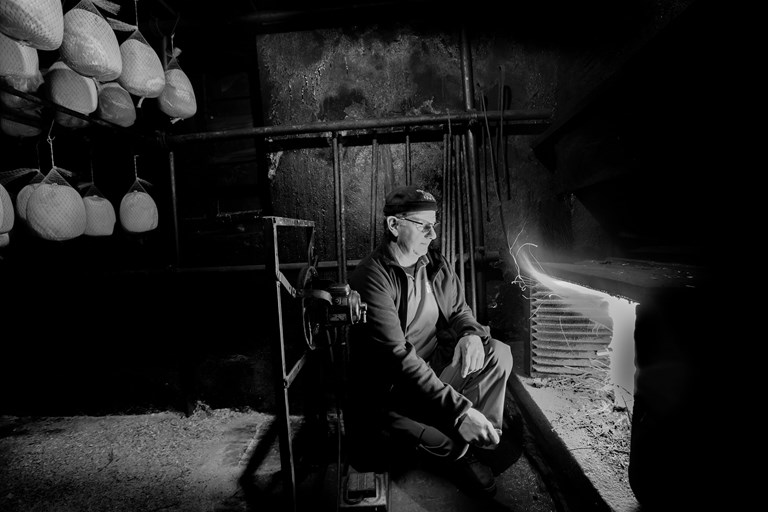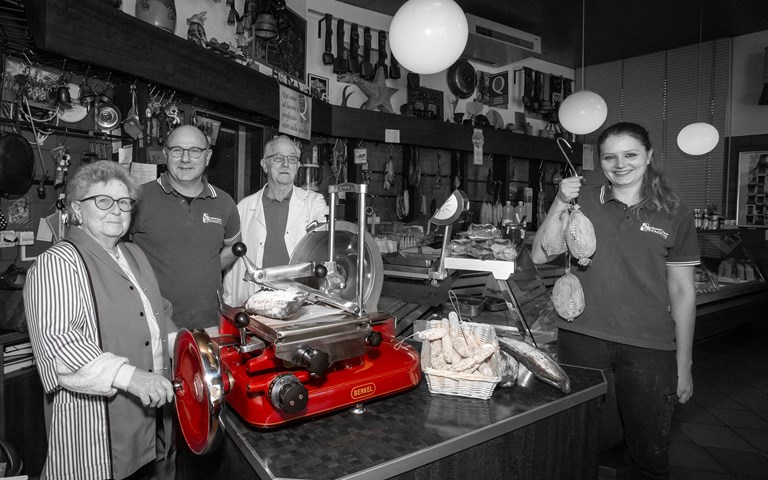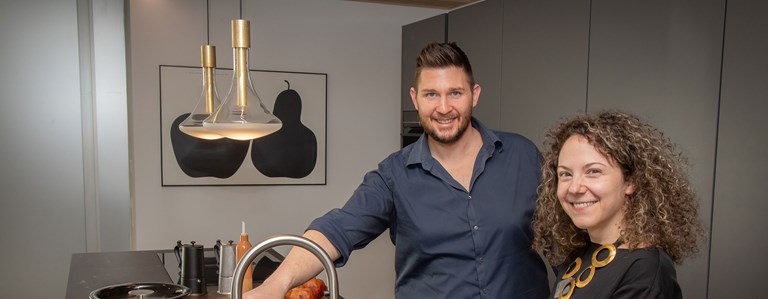
The ham that tastes of fireplace
The pig, el porscéll, is perhaps the animal that has proved to be most important for the peasant table. Like a walking pantry it was used in the most diverse preparations, ready to be consumed over months. The main processing remains that of ham (from Latin perexuctus, which means dried), even if each area, over the centuries, has refined its variants.
A gastronomic heritage that today we try to protect from the massification of “global” tastes. The Moesano can in fact boast a product that has become part of the Swiss culinary heritage: The Mesolcina raw ham (presutt or parsutt mesolcines).
What makes it unique is the smoking process and the use of garlic to flavor it. The companies that continue to produce it can be counted on the fingers of a hand, among these there is Fagetti of Roveredo. Opened 61 years ago by Lorenzo “Nini” and his wife Graziella, now their son Moreno continue the tradition.
We interviewed them.

When you enter the butcher shop Fagetti in Roveredo, everything speaks of tradition. What stands out are not only the gastronomic delicacies on display in the counter and hung on the walls.
You stay fascinated by the red Berkel slicer (“it’s from 1911”, Moreno tells us) and the cowbells hanging under the ceiling (“a hobby, we used to have we used to have goats and cows”).
Welcoming us is Moreno with his mother Graziella, “Nini” is not here. “We retired him - says his wife. Although, despite his 86 years, he still comes by the store. The passion is stronger than him. Today he’s not because there are the World Ski Championships on television. It’s the only way to keep him home. “So did you pass all the secrets on to Moreno? What are they? “Secrets are secrets,” Moreno replies smiling.
But we do know something. To make Prosciutto crudo della Mesolcina the pigs’ legs are salted, spiced and smoked, and garlic is always present in the mixture, right Moreno?
“Yes. Garlic and local wine. Then each producer adds his own mixture of spices. The salting phase sees the hams massaged with a mixture of salt and pepper. Then they are left in a crate for a couple of days at about 5 °C. At this point garlic and red wine are added. When the salting is finished, after about three weeks, it is smoked.
How does it happen?
“There are only a few of us left to do it. I leave the hams in the smokehouse for a week. In the fireplace I put wood from the woods, a mixture. The important thing is that it is well wood that gives a sweet smoke. Then the hams spend another three weeks in the nearby room to dry.
A technology that is centuries old?
“Yes. Here it’s always done the same way. New techniques are not needed to get the traditional flavor.”
“A winning horse doesn’t change.” says Mrs. Graziella, smiling.
Where do the pigs come from? “They are all Swiss pigs,” explains Moreno - but most of them come come from beyond Gotthard. But sometimes they bring us to slaughter some local pigs from the valley.
We still have the slaughterhouse, and so we also produce hams One hundred percent Mesolcina.”
What types of hams do you produce?
“There is the “fiocco” (flake), which is larger in size formed from the back part of the thigh, and the walnut, which is leaner and smaller, which is the front part.
The “fiocco” has three and a half or four months of seasoning, the walnut about one month.
How much is your production?
“About two thousand pieces of flake and a thousand of walnut per year”.
Who are your customers?
“Many come from outside the valley. And there are also several young people, they have known the product and are looking for it. Now you can also find it at Migros.
Today, many prefer to eat little but good. Even though times and habits have changed and it’s not always easy to stay in the market. At one time in Roveredo, there were three butcher shops, today there are only two.
How should it be eaten?
“It’s perfect for an appetizer, a snack, but also on a sandwich or on a slice of dark bread. The important thing is to cut it neither too thin nor too thick, and after leaving it at least half an hour at room room temperature. Only in this way it releases all its aromas. And then it would not hurt a good glass of local wine”.
Is it a job that requires sacrifice?
“Certainly it’s challenging, there is the store to follow and there is the production to do. But it also gives much satisfaction; you are rewarded when you see that your products are appreciated by customers and are continuously requested”.
Is this what has motivated “Nini” for sixty years?
“Yes - says his wife -. He has always had a great passion for this work. He had been an apprentice at Boldini’s. Then, as soon as he could, he opened his own butcher shop. We were very young.”
Mrs. Graziella remembers that “headshot” at age 61. “I was 22 years old, we got married and opened
the store. There was no money, but people were different, more available. We opened there,” she says pointing to the building opposite, “Then we moved here, to the place where I used to work as a seamstress. Since then, we have never stopped”.
His son Moreno has picked up the tradition and now hopes that his daughter, Giulia, will continue the tradition. She is already ready, she has finished her apprenticeship, we see her looking out from the back. In the future of Mesolcina ham in her eyes.
Playlist


